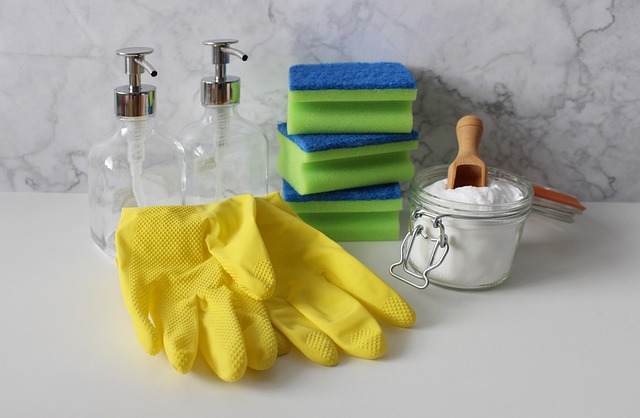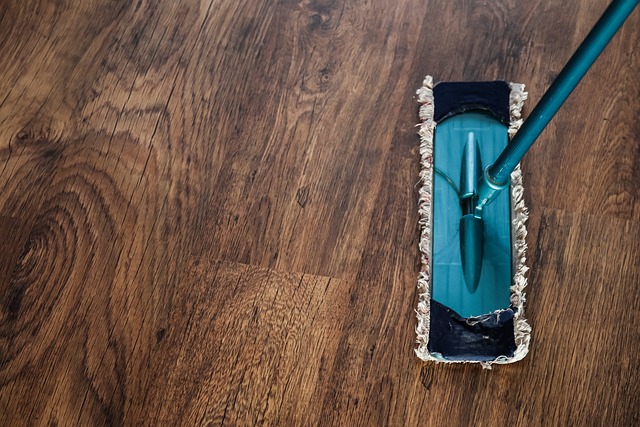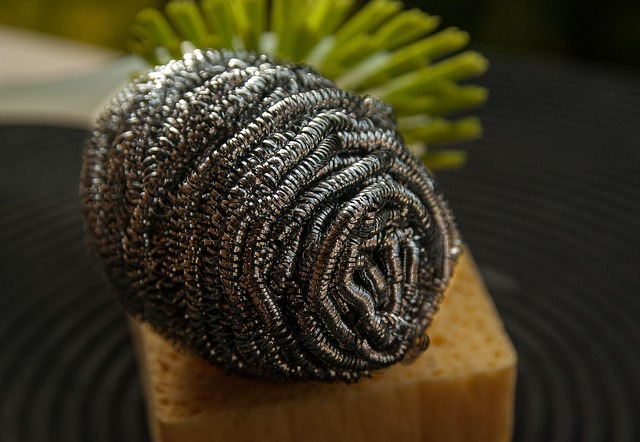Rug fabrics vary widely, from natural fibers like wool and silk to synthetic materials such as nylon and polyester, each with unique stain adherence properties and cleaning requirements. Effective rug cleaning involves understanding fabric types, pre-treating stains, selecting appropriate cleaning solutions, allowing proper drying time, and regular maintenance. Quick action on fresh spills and testing cleaning products in hidden areas prevent damage while ensuring optimal stain removal.
Rug cleaning is an art, especially when it comes to removing stubborn stains. Understanding your rug’s fabric and the science behind staining is key to effective removal. This guide navigates the process, from pre-treating your rug for optimal results to choosing the best cleaning solutions. We’ll explore proven stain removal techniques, highlight common issues, and provide expert tips for a deep clean. Discover how to restore your rug to its original beauty with these essential rug cleaning practices.
Understanding Rug Fabrics and Stains

Rug fabrics vary greatly, from natural fibers like wool and silk to synthetic materials such as nylon and polyester. Each type has unique properties that affect how stains adhere and how best to remove them during rug cleaning. For instance, wool rugs may require gentle handling due to their delicate nature, while synthetic fibers can withstand more robust cleaning methods.
Stains on rugs can stem from various sources—from everyday spills like coffee or pet accidents to dirt and grime tracked in from outside. Identifying the type of stain is crucial for effective rug cleaning. Different stains call for different treatments—blotting for liquid spills, using specialized enzymes for organic stains, or abrasive cleaners for ground-in dirt. Understanding both the rug fabric and the type of stain allows for more precise and successful removal during rug cleaning.
Pre-Treatment: Preparing Your Rug for Cleaning

Before diving into the actual rug stain removal process, proper pre-treatment is crucial for effective cleaning. It involves preparing your rug by identifying and testing an appropriate cleaning method for different types of stains. This preparation ensures that when you do proceed with the cleaning, you’re using safe and suitable techniques to avoid damaging the fibers or colors of your rug.
During pre-treatment, inspect your rug to understand the nature of the stains present. Different substances require distinct treatment methods. For instance, treating an oil-based stain differs from handling a wine or coffee spill. Test a small, inconspicuous area with a recommended cleaning solution to ensure it doesn’t cause discoloration or damage. This step is vital as it allows you to be proactive in your rug cleaning approach, ensuring optimal results when using professional rug cleaning techniques and products.
Choosing the Right Cleaning Solutions

When it comes to rug stain removal, selecting the appropriate cleaning solutions is a crucial first step. Different stains require specific treatments, and using the wrong product can damage your precious rug or even worsen the stain. For instance, harsh chemicals often used in household cleaners might be too aggressive for delicate fibre types, leading to fading or disintegration. Therefore, understanding your rug’s material and construction is key.
Opting for gentle yet effective rug cleaning solutions designed for specific stain types ensures optimal results without causing harm. Many modern products are formulated to target common rug stains like wine, coffee, or pet accidents while preserving the rug’s quality. Always read product labels and follow instructions to ensure safe and efficient cleaning, maintaining your rug’s beauty and longevity in the process.
Effective Stain Removal Techniques

Effective stain removal begins with understanding your rug’s material and construction. Different fabrics, such as wool or synthetic blends, require unique care to avoid damaging their fibers. For rug cleaning, it’s crucial to act swiftly; fresh stains are easier to treat. Begin by blotting the affected area gently with a clean cloth or paper towel to absorb excess liquid. Avoid rubbing, which can spread the stain deeper into the fibers.
Next, identify the type of stain for the best approach. Common rug stains and their solutions include treating oil-based spills with a specialized pre-treatment product and using club soda for coffee or wine stains. For stubborn cases, a mild detergent or a mixture of warm water and white vinegar can be effective. Always test any cleaning solution in an inconspicuous area first to ensure it doesn’t cause discoloration.
Drying and Curing Your Rug

After successfully removing stubborn stains from your rug, it’s crucial to allow it to dry and cure properly. Rushing this process can lead to lingering moisture, which may cause new issues like mold or mildew growth. To ensure optimal results, avoid walking on the treated areas until the rug is completely dry. Most professional rug cleaning services recommend at least 24-48 hours of drying time, depending on the size and thickness of your rug.
Proper curing involves not only leaving it undisturbed but also maintaining a well-ventilated space. Open windows or use fans to expedite the drying process while preventing any musty odors from developing. Once dry, check for any signs of discoloration or water damage, and if everything looks good, your rug is ready to be used again, ensuring a fresh and clean environment through effective rug cleaning practices.
Common Stains and Their Remedy

Rugs can be beautiful additions to any space, but they’re also prone to staining from everyday spills and accidents. Understanding common stains and their remedies is crucial for effective rug cleaning. One of the most frequent issues is coffee or tea stains, which can be treated by quickly blotting the area with a clean cloth or paper towel to absorb as much liquid as possible. For more persistent stains, mixing a solution of mild detergent and warm water can be effective; gently rubbing the solution into the fiber with a soft-bristled brush helps to loosen dirt before rinsing.
Another common type of stain is that caused by pet accidents or grease from cooking. These often require stronger solutions, like a mixture of white vinegar and water. Vinegar’s natural acidity can help break down the organic compounds responsible for such stains. For tough cases, enlisting the help of professional rug cleaning services equipped with specialized equipment and chemicals might be the best course of action. Regular maintenance, including spot cleaning and deep cleaning sessions following manufacturer recommendations, is key to keeping your rugs in pristine condition.
